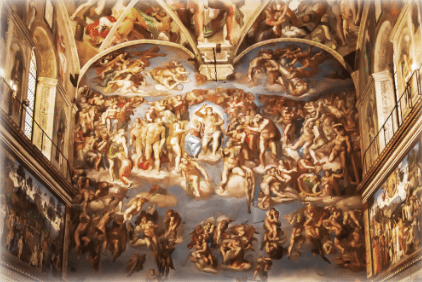Michelangelo
Michelangelo Buonarroti was born on March 6, 1475 in Caprese, Tuscany, Italy. His father was a banker. Michelangelo started studying grammar, but didn’t like it, and became an apprentice to the painter Domenico Ghirlandaio. In 1489, Lorenzo Medici asked Ghirlandaio to send Michelangelo to the Humanist Academy. The Medici family was famous in Italy at the time. They were bankers and spent a lot of money to fund the arts. Lorenzo died in April of 1492, which forced Michelangelo to lose his status and move back home with his father. Two years later, the Medici family rehired Michelangelo. Unfortunately, the city’s politics changed, and the Medici family were thrown out of Florence so Michelangelo moved from Venice to Bologna in search of work. He returned to Florence towards the end of 1494, because the Medici family started to gain control once more in the city. In 1499, the Soderini family came into control, and wanted Michelangelo to finish David, a sculpture that was unfinished for more than 40 years. Michelangelo finished it in 1504. It was so beautiful that they placed the sculpture in the plaza for everyone to see. The next year, Pope Julius II asked Michelangelo to build his tomb, but due to other projects, it was never completed. For over 40 years he worked on it. From 1508-1512, he painted the ceiling of the Sistine Chapel. He hated every minute of it, because he thought that his painting was way below acceptable standards. During the entire four years, he barely ate, slept, or went out. His main goal was for this task just to be over and done with. From 1534-1541, he painted The Last Judgment on the wall of the Sistine Chapel. Michelangelo has a self portrait in there as well. The finished product has 300 figures. Today, the Sistine Chapel is visited by millions of people every year. During his lifetime, he only had one apprentice, Ascanio Condiri, but his art was never recognized like his master’s was. Michelangelo was also the only artist at the time to have his biography published while he was alive. Besides being an artist, Michelangelo was a poet. It has been said that Michelangelo wrote more than 300 sonnets and madrigals, a short lyrical poem.

